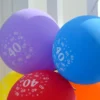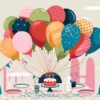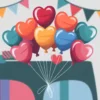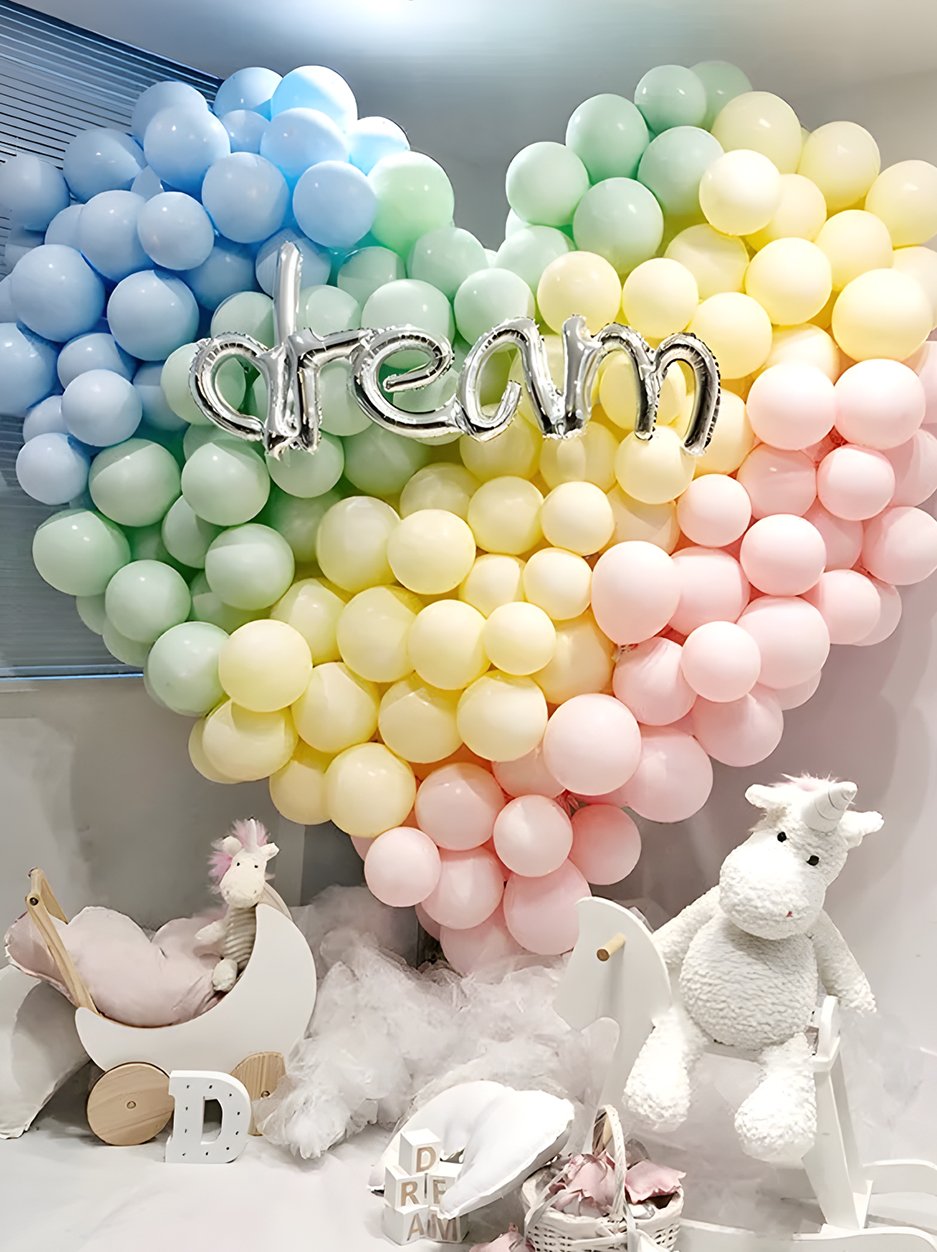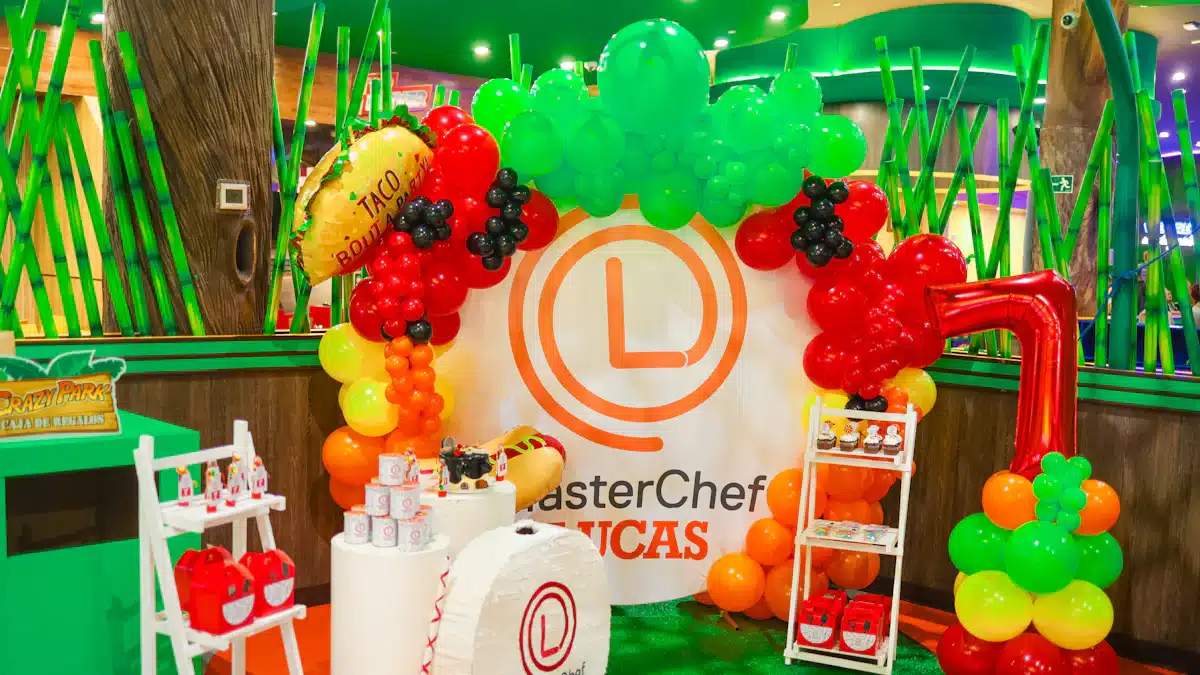
Balloon art captures your imagination with its playful and creative charm. From simple decorations to intricate sculptures, it has become a universal symbol of joy. This transformation began with the invention of rubber balloons in 1824 by Michael Faraday. Over time, these balloons evolved into tools for artistic expression. Today, you see balloon art everywhere, from children’s parties to grand fashion shows. Festivals dedicated to balloon art highlight its global appeal and cultural significance. The development of modelling balloons has further expanded its possibilities, making it a staple in celebrations worldwide.
Key Takeaways
Balloon art started with animal bladders and now uses rubber. This shows how creative people have been over time.
In 1824, Michael Faraday made rubber balloons. This invention made balloon art popular for parties and events.
Special balloons for twisting turned balloon art into a real skill. Artists can now make detailed and cool designs.
Today, people use eco-friendly balloons that break down easily. These help the planet while keeping balloon art fun.
Balloon art is still popular in culture. Famous artists like Jeff Koons made it a respected modern art style.
The Origins of Modeling Balloons
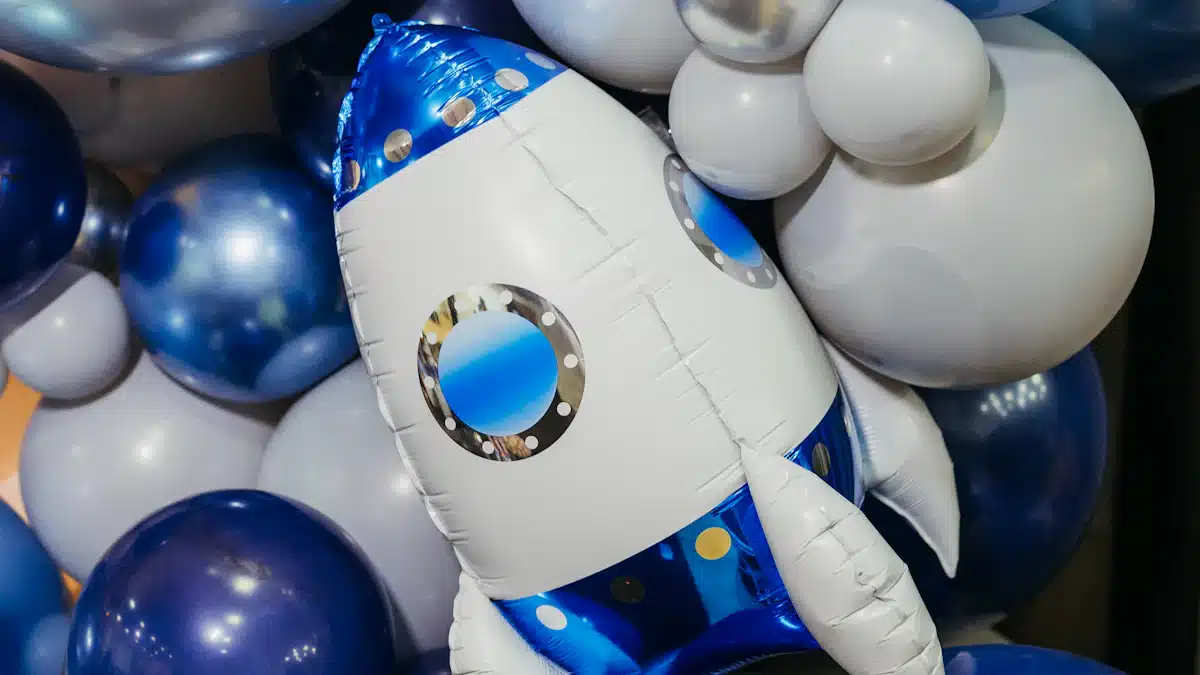
Early Balloon Materials
Animal bladders and intestines in ancient entertainment.
The origins of balloon art trace back to ancient times when people used animal bladders and intestines as makeshift balloons. In Europe, jesters and troubadours inflated the entrails of animals to entertain crowds. These materials, though thin, were strong enough to be shaped into amusing forms. This practice showcased the creativity of early entertainers who relied on available resources to bring joy to their audiences.
Literature from the 19th century also highlights the use of animal entrails for balloon-making. In “Swiss Family Robinson,” a character suggests crafting a balloon from whale entrails. Similarly, “Moby Dick” describes the sperm whale as a natural balloon due to the gases it produces. These references reflect the long-standing tradition of using organic materials for entertainment. Before rubber, dried and inflated bladders, intestines, and stomachs served as the primary materials for balloons, demonstrating the ingenuity of our ancestors.
Balloon-like objects in early celebrations.
In early celebrations, people used balloon-like objects to add excitement and wonder. These creations, often made from animal parts, became symbols of festivity. They appeared in various cultural events, showcasing the universal appeal of balloons even before the invention of rubber. These early forms of balloon art laid the foundation for the modern craft you see today.
The Invention of Rubber Balloons
Michael Faraday’s creation of rubber balloons in 1824.
The history of balloons took a significant turn in 1824 when Michael Faraday invented the first rubber balloons. He created them for scientific experiments, particularly with hydrogen gas. Faraday layered rubber sheets and sealed them to make gas-tight balloons. These early balloons demonstrated considerable ascending power but struggled with gas retention. Despite their initial scientific purpose, they marked the beginning of a new era in balloon art.
The popularization of rubber balloons in the 19th century.
Rubber balloons gained popularity during the late 19th century, thanks to advancements in rubber manufacturing. The industrial revolution made balloon production more affordable and consistent. In 1825, Thomas Hancock introduced do-it-yourself balloon-making kits, allowing people to create their own rubber balloons. These kits contributed to the growing use of balloons as party accessories. Over time, rubber balloons became a staple in celebrations, paving the way for the development of modeling balloons and the origins of balloon twisting.
The Evolution of Balloon Art
The Birth of Balloon Animals
Herman Bonnert’s pioneering work in balloon twisting in 1939.
The history of balloon animals begins with the Aztecs, who crafted figures like dogs and donkeys from animal entrails as offerings. This early practice laid the groundwork for the art of balloon twisting. In 1939, Herman Bonnert revolutionized this craft by introducing balloon modeling at a magician’s convention. His innovative techniques captivated audiences and inspired other balloon artists to explore this creative medium. During the same period, Henry J. Maar also contributed to the growing popularity of balloon animals, solidifying their place in entertainment.
The role of magicians in popularizing balloon animals.
Magicians played a crucial role in the evolution of balloon art. They incorporated balloon twisting into their performances, using it to engage and amaze their audiences. This integration of balloon modeling with magic tricks helped spread the art form globally. As magicians traveled and performed, they introduced balloon animals to new cultures, making them a beloved feature of parties and events.
Key Milestones in the Evolution of Balloon Art
Development of specialized modeling balloons.
The development of specialized modeling balloons marked a turning point in the history of balloons. Unlike traditional round balloons, these were designed for twisting into intricate shapes. Their durability and flexibility allowed balloon artists to create more complex designs, expanding the possibilities of balloon art. This innovation transformed balloon twisting into a recognized art form.
The establishment of international balloon art conventions.
International conventions dedicated to balloon art have further advanced the craft. These events bring together balloon artists from around the world to share techniques, showcase their work, and celebrate the evolution of balloon art. They also provide a platform for innovation, inspiring new trends and styles in balloon modeling.
Cultural Adoption and Global Spread
Balloon art as a staple in parties and events worldwide.
Balloon art has become a universal symbol of celebration. Its vibrant colors and playful designs make it a favorite for birthdays, weddings, and corporate events. Festivals showcasing massive balloon installations highlight its adaptability and cultural significance. Whether minimalistic or elaborate, balloon art enhances the atmosphere of any gathering.
Influence of different cultures on balloon modeling styles.
Different cultures have influenced the styles and themes of balloon modeling. For example, Japanese balloon artists often incorporate elements of origami into their designs, while Western styles focus on creating lifelike figures. This cultural exchange has enriched the art of balloon twisting, making it a dynamic and evolving craft.
Modern Trends in Balloon Art
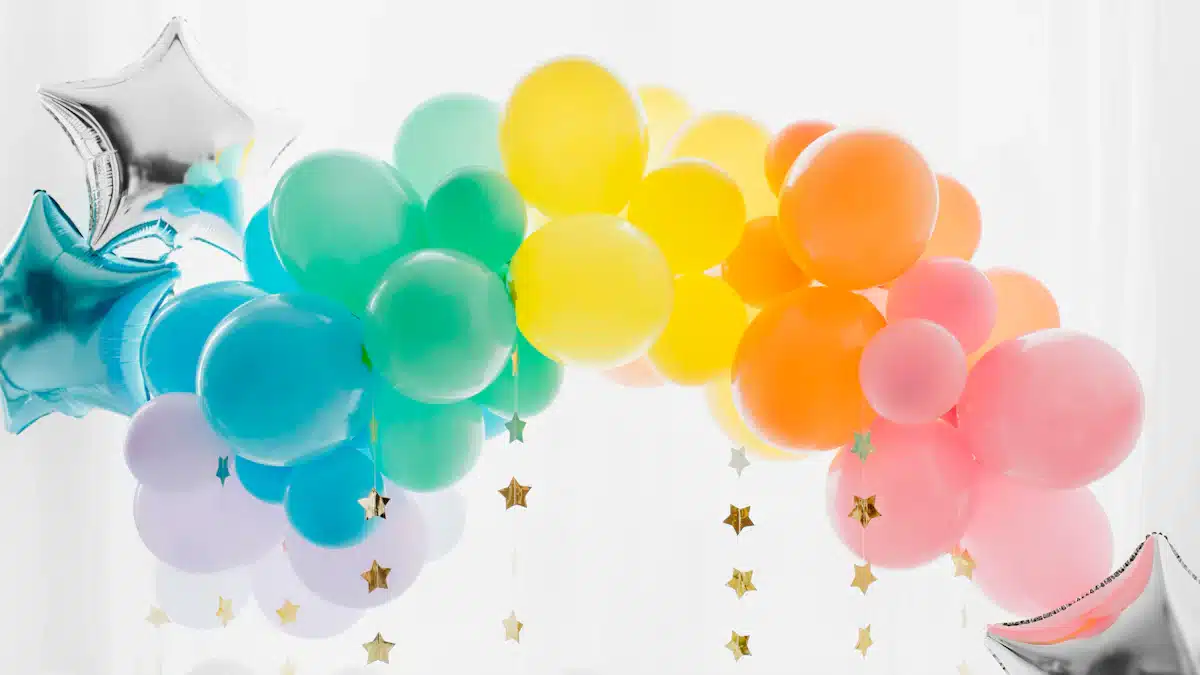
Eco-Friendly Balloon Materials
The shift to biodegradable and sustainable balloons.
Modern balloon art embraces sustainability by shifting to eco-friendly materials. You might notice biodegradable balloons made from natural latex, which decompose faster than traditional synthetic ones. These balloons reduce long-term pollution and pose less risk to wildlife. For example, brands like AFTERLOON offer biodegradable options that protect ecosystems while maintaining the vibrant appeal of balloon art. Reusable alternatives, such as SOPPYCID silicone water balloons, also promote sustainability by allowing repeated use.
Innovations in reducing environmental impact.
Innovations in balloon materials aim to minimize environmental harm. Biodegradable balloons break down quickly, reducing plastic waste in natural habitats. They also lower the risk of wildlife ingestion or entanglement. These advancements ensure that modern balloon art continues to bring joy without compromising the planet’s health.
Large-Scale Balloon Installations
Balloon sculptures in public spaces and events.
Large-scale balloon installations have transformed public spaces into breathtaking art exhibits. You can find examples like the Balloon Tank Art Project in Geneva or the Out of Space Theme Decor in Athens. These installations showcase the creativity of balloon artists and highlight the versatility of modeling balloons. They often serve as centerpieces for festivals and events, captivating audiences with their scale and detail.
Record-breaking balloon art projects.
Record-breaking projects demonstrate the potential of modern balloon art. The Guinness World Record Balloon Zoo in Xiamen used 470,000 balloons to create a stunning display. Other notable projects include the Metropol Istanbul Animal Kingdom Exhibition, which featured 150,000 balloons, and the CUBES World’s Largest Balloon Art Building in the Netherlands, made with 100,000 balloons. These achievements inspire balloon artists worldwide to push the boundaries of their craft.
The Digital Age of Balloon Art
Social media’s role in showcasing balloon artistry.
Social media has revolutionized how you experience balloon art. Platforms like Instagram allow balloon artists to share their creations with a global audience. User-generated content and brand ambassadors enhance visibility, making balloon art more accessible and popular. You might even find yourself inspired to try twisting balloons after seeing these captivating posts.
Growth of online tutorials and virtual balloon modeling events.
The digital age has also made learning balloon art easier. Online tutorials teach you twisting techniques step by step, while virtual events connect you with a community of balloon enthusiasts. These resources ensure that modern balloon art continues to evolve and reach new audiences.
The Cultural and Entertainment Significance of Balloon Art
Balloon Art in Celebrations
Its role in birthdays, weddings, and corporate events.
You’ve likely seen balloon art brighten up celebrations like birthdays and weddings. Balloons add color and excitement to birthday parties, creating a cheerful atmosphere for guests of all ages. At weddings, they transform reception halls into festive spaces, often with elegant arches or custom-themed sculptures. Anniversaries also benefit from balloon decorations, which bring a touch of whimsy to these heartfelt occasions. For graduations, balloons symbolize achievement and joy, often displayed in school colors. Baby showers and gender reveal parties use balloons creatively, such as popping them to reveal the baby’s gender. These versatile decorations have become essential for making events memorable.
How balloon art creates joy and wonder in celebrations.
Balloon art captivates people with its playful and imaginative nature. Balloon twisting transcends cultural boundaries, bringing smiles to everyone, from children to adults. You’ve probably noticed how balloon animals or intricate designs can instantly create a sense of wonder. Skilled professional balloon artists transform simple balloons into detailed sculptures, fostering a warm and joyful atmosphere. This art form emphasizes togetherness and celebration, making it a staple in events worldwide.
Balloon Art in Media and Pop Culture
Appearances in movies, TV shows, and advertisements.
Balloon art has made its mark in media and pop culture. You’ve seen clowns and entertainers use balloon animals in movies and TV shows to delight audiences. Advertisements often feature balloon art to evoke feelings of fun and nostalgia. For example, balloon twisting in popular culture highlights its ability to connect with people emotionally. These appearances showcase the cultural significance of balloon art and its enduring appeal.
Contributions of iconic balloon artists to the craft.
Jeff Koons, a renowned balloon artist, has elevated balloon art to new heights. His famous Balloon Dog sculptures blend contemporary art with popular culture. One of his works, Balloon Dog (Orange), sold for $58.4 million, setting a record for a living artist. This achievement underscores the value and impact of balloon art in the modern art world. Koons’ work has inspired countless balloon artists to explore the artistic potential of modeling balloons. His contributions highlight the history of balloon art as a cultural phenomenon and its evolution into a respected art form.
The journey of balloon modeling showcases its transformation from ancient tools to modern artistry. Early balloons, made from animal bladders, evolved into rubber creations after Michael Faraday’s invention in 1824. Today, balloon art symbolizes celebration and creativity, connecting generations through its adaptability.
🎈 Balloon art continues to innovate with eco-friendly materials and large-scale installations.
Looking ahead, you can expect illuminated sculptures, interactive displays, and even wearable balloon designs. These advancements ensure balloon art remains a vibrant and sustainable form of expression for years to come.
FAQ
What materials are used to make modern balloons?
Modern balloons are typically made from natural latex or synthetic rubber. Eco-friendly options include biodegradable latex balloons, which decompose faster and reduce environmental harm. Some reusable balloons are crafted from silicone for sustainability.
🌱 Tip: Always check for biodegradable labels when purchasing balloons to minimize environmental impact.
How long does it take to learn balloon twisting?
You can learn basic balloon twisting in a few hours with practice. Mastering advanced designs may take weeks or months. Online tutorials and workshops can speed up your progress.
🎈 Note: Start with simple shapes like dogs or swords before attempting complex sculptures.
Are balloons safe for children?
Balloons are safe for children when used under adult supervision. Popped balloons or small pieces can pose choking hazards. Always dispose of broken balloons immediately.
⚠️ Alert: Never let young children handle uninflated balloons without guidance.
Can balloon art be used outdoors?
Yes, but balloons are sensitive to heat, wind, and sunlight. Latex balloons may degrade faster outdoors. Use high-quality balloons and secure them properly to withstand outdoor conditions.
🌞 Tip: Choose shaded areas or use UV-resistant balloons for outdoor events.
How can I preserve balloon sculptures?
Keep balloon sculptures in cool, dry places away from direct sunlight. Avoid sharp objects and extreme temperatures. Proper storage can extend their lifespan by several days.
🛠️ Pro Tip: Spray sculptures with a balloon shine product to maintain their glossy appearance.

